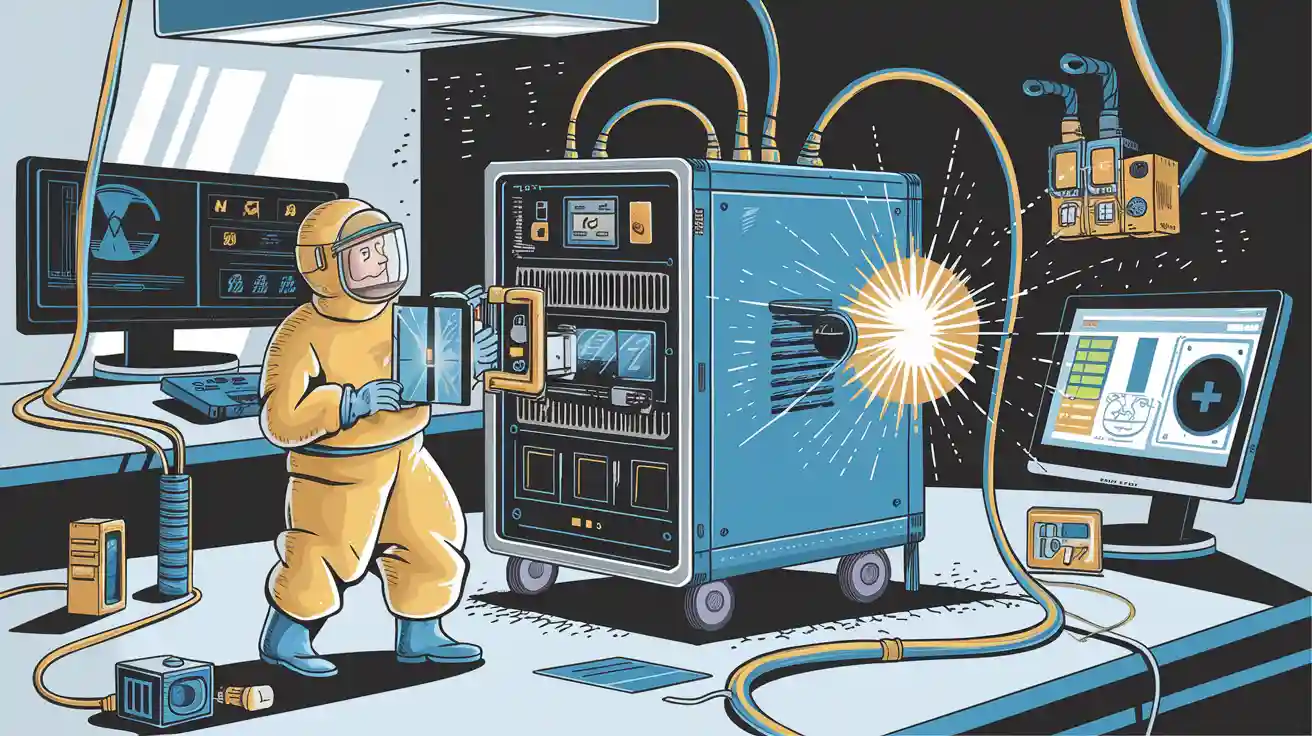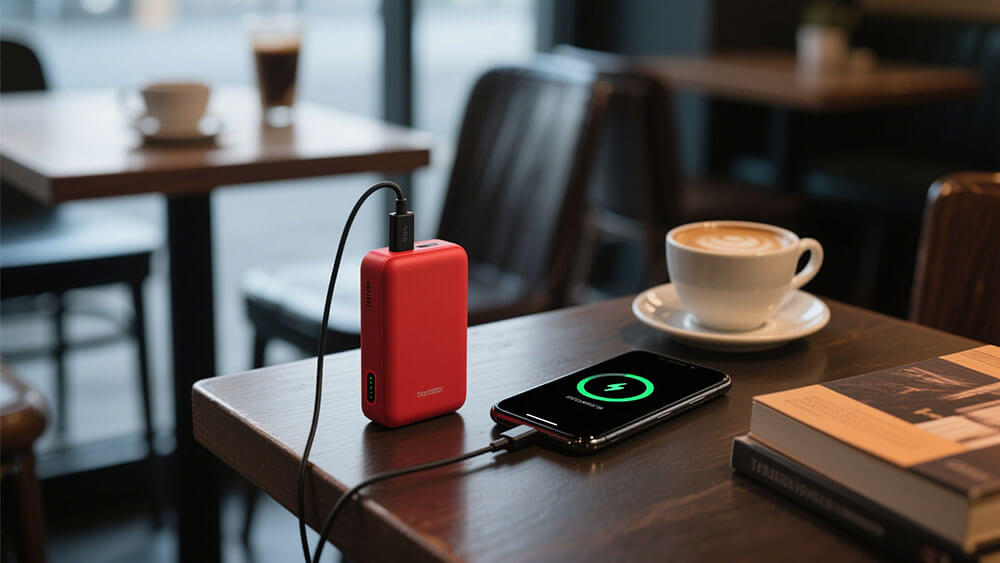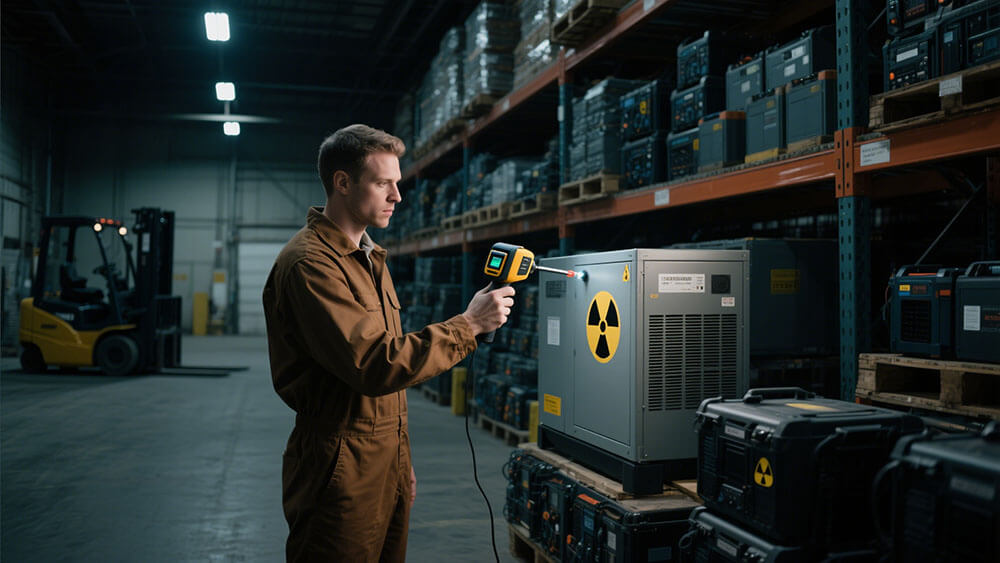Contents

Radiation test of mobile power supply plays a vital role in ensuring the safety and performance of these devices, especially those powered by lithium-ion batteries. It focuses on electromagnetic compatibility (EMC), which ensures devices operate without interfering with other electronics. This process prevents issues like signal disruptions in consumer electronics, enhances reliability, and ensures regulatory compliance.
The radiation test of mobile power supply also identifies potential risks early, such as electromagnetic interference (EMI), which can disrupt infrastructure systems or sensitive medical devices. By addressing these risks, you can ensure your devices meet global standards and maintain high-quality performance across diverse applications.
📌 Tip: Prioritize the radiation test of mobile power supply early in your design process to avoid costly redesigns and improve consumer trust.
Explore our custom battery solutions for tailored safety and performance.
Key Takeaways
Radiation tests are important to keep mobile power supplies safe.
Testing early during design helps save money and build trust.
Following rules like FCC and CE avoids bans and ensures reliability.
Part 1: Understanding the Risks of Radiation in Mobile Power Supplies

1.1 Electromagnetic interference (EMI) and its impact on device performance
Electromagnetic interference (EMI) poses a significant challenge to mobile power supplies, particularly those powered by lithium-ion batteries. EMI occurs when electromagnetic radiation disrupts the normal operation of nearby electronic devices. This interference can lead to performance degradation, data loss, or even complete system failures. For mobile power supplies, the high-frequency switching circuits used in voltage regulation are common sources of EMI.
Real-world examples of EMI impact:
Poorly shielded power supplies in networking environments can generate harmonics, interfering with network signals and causing data corruption.
In military applications, strong electromagnetic fields can disrupt critical systems, such as radar and sonar servers, jeopardizing mission success and personnel safety.
Consumer electronics like capacitive touch screens often experience false touches, ghosting, or reduced sensitivity due to EMI, affecting user experience.
To mitigate these issues, you must prioritize electromagnetic compatibility (EMC) testing during the design phase. This ensures your mobile power supplies operate reliably without compromising the performance of surrounding devices.
📌 Note: EMI can also affect infrastructure systems, such as transportation networks, where uninterrupted operation is crucial. Learn more about infrastructure battery solutions.
1.2 Safety hazards associated with radiation emissions in lithium battery packs
Radiation emissions from lithium battery packs can introduce safety risks that extend beyond device performance. These emissions, if not properly controlled, may interfere with sensitive equipment in medical, robotics, and security systems. For example, medical devices like pacemakers or imaging equipment can malfunction due to electromagnetic radiation, posing risks to patient safety. Explore medical battery solutions.
Lithium-ion batteries, known for their high energy density and efficiency, often rely on high-frequency circuits for charging and discharging. These circuits can emit electromagnetic radiation that exceeds regulatory limits if shielding and design are inadequate. In robotics applications, such interference can disrupt communication between sensors and controllers, leading to operational errors. Discover robotics battery solutions.
To address these safety risks, you should implement robust shielding techniques and conduct comprehensive radiation testing. This ensures compliance with global standards and safeguards the reliability of your devices in critical applications.
1.3 Why addressing radiation risks is essential for mobile power supply reliability
Ignoring radiation risks can compromise the reliability of mobile power supplies, leading to costly consequences. Electromagnetic radiation can cause unexpected shutdowns, charging interruptions, or reduced efficiency in lithium battery packs. These issues not only affect consumer electronics but also industrial systems where uninterrupted power is vital. Explore industrial battery solutions.
Addressing radiation risks ensures your devices meet EMC standards, enhancing their performance and marketability. Compliance with regulations like FCC, CE, and CCC prevents market restrictions and legal disputes. Moreover, reliable mobile power supplies foster consumer trust, positioning your brand as a leader in safety and innovation.
✅ Tip: Partner with experts like Large Power to integrate advanced EMC solutions into your lithium battery designs. Request a custom consultation.
Part 2: The Role of Radiation Testing in Mitigating Risks

2.1 Objectives of the radiation test of mobile power supply
Radiation testing of mobile power supply serves multiple objectives that are crucial for ensuring device reliability and compliance. The primary goal is to verify electromagnetic compatibility (EMC), ensuring your devices operate without interfering with other electronics. This testing identifies and mitigates electromagnetic interference (EMI) risks, which can disrupt sensitive equipment like medical devices, robotics systems, and security systems. Explore medical battery solutions.
Another key objective is to ensure compliance with global regulations. Standards such as FCC, CE, and CCC mandate strict limits on electromagnetic emissions. By conducting radiation testing early in the design phase, you can avoid costly redesigns and ensure your products meet compliance standards. This proactive approach not only safeguards your market access but also enhances consumer trust in your brand.
Radiation testing also plays a vital role in optimizing device performance. High-frequency circuits in lithium-ion batteries, such as those used for voltage regulation, can emit electromagnetic radiation. Testing helps identify design flaws and ensures robust shielding techniques are implemented, preventing issues like charging interruptions or reduced efficiency. Request a custom consultation.
2.2 Key testing methods: Conducted emissions, radiated emissions, and immunity testing
Radiation testing employs several methods to evaluate the electromagnetic behavior of mobile power supplies. Each method targets specific aspects of EMC compliance:
Conducted emissions testing: This method measures electromagnetic noise transmitted through power lines or data cables. It is particularly relevant for lithium battery packs, where high-frequency switching circuits can generate noise within the 150 kHz to 30 MHz range. Standards like CISPR 32 outline detailed limits and measurement techniques for conducted emissions.
Radiated emissions testing: This method assesses electromagnetic waves emitted directly into the environment. It is widely performed across industries and involves specialized facilities like anechoic chambers. Radiated emissions testing ensures your devices do not exceed regulatory limits, which are critical for global market access.
Immunity testing: Unlike emissions testing, immunity testing evaluates how well your devices withstand external electromagnetic interference. For mobile power supplies, this ensures reliable operation in environments with strong electromagnetic fields, such as near cell towers or industrial equipment. Immunity testing is essential for applications in infrastructure and industrial systems. Explore industrial battery solutions.
These testing methods collectively address the complex requirements of EMC compliance. By integrating them into your product development process, you can ensure your devices meet stringent regulations while maintaining high performance.
2.3 Ensuring electromagnetic compatibility (EMC) for lithium battery-powered devices
Achieving EMC for lithium battery-powered devices requires a comprehensive approach to radiation testing. Lithium-ion batteries, known for their high energy density and efficiency, often rely on high-frequency circuits for charging and discharging. These circuits can emit electromagnetic radiation that interferes with nearby electronics. Explore lithium-ion battery solutions.
Radiation testing ensures your devices comply with EMC standards, preventing issues like signal disruptions in consumer electronics or operational errors in robotics systems. For example, poorly shielded lithium battery packs can cause false touches on capacitive screens or disrupt communication between robotic sensors and controllers. Discover robotics battery solutions.
Compliance with EMC regulations also safeguards your market access. Non-compliance can lead to product recalls, legal disputes, or restrictions in major markets. By prioritizing radiation testing, you can avoid these risks and position your brand as a leader in safety and innovation.
✅ Tip: Partner with experts like Large Power to integrate advanced EMC solutions into your lithium battery designs. Request a custom consultation.
Part 3: Regulatory Requirements and Industry Standards

3.1 Global standards for radiation testing: FCC, CE, IEC, and CCC
Radiation testing for mobile power supplies must comply with global standards to ensure electromagnetic compatibility (EMC) and market access. These standards vary by region, influencing product design and testing requirements.
FCC (Federal Communications Commission): In the United States, FCC Part 15 regulates electromagnetic emissions, ensuring devices do not interfere with communication networks or other electronics.
CE (Conformité Européenne): The European Union enforces EMC compliance through directives like EN 55032, which focus on emissions and immunity testing for electronic devices.
IEC (International Electrotechnical Commission): IEC 62133 outlines safety requirements for lithium-ion battery packs, addressing both performance and transport safety.
CCC (China Compulsory Certification): In China, GB 9254 sets strict limits on electromagnetic emissions, ensuring devices meet national standards for safety and reliability.
Global Trends:
The European Union’s Radio Equipment Directive (RED) drives high adoption rates of EMF testing services.
South Korea observed a 40% increase in demand for EMF testing following stricter regulations for 5G infrastructure.
Diverging EMF limits across regions compel manufacturers to adapt products to multiple standards, increasing reliance on regional testing providers.
3.2 Specific EMC requirements for lithium battery packs in mobile power supplies
Lithium-ion battery packs require rigorous EMC testing to ensure they function reliably without disrupting nearby electronics. Testing evaluates both emissions and immunity, addressing potential interference risks.
Key Standards:
UL 1642: Ensures lithium-ion battery safety.
IEC 62133: Defines international safety requirements for portable sealed secondary cells.
UN 38.3: Establishes transport safety protocols for lithium batteries.
CE Marking: Confirms compliance with European health and safety standards.
FCC: Validates electromagnetic compatibility and interference limits.
Electromagnetic compatibility testing identifies design flaws, such as inadequate shielding or high-frequency circuit noise. By addressing these issues, you can prevent malfunctions in consumer electronics, robotics, and medical devices. Explore lithium-ion battery solutions.
3.3 Consequences of non-compliance: Market restrictions and reputational risks
Failing to meet EMC standards can result in severe consequences for your business. Non-compliance may lead to product recalls, legal disputes, or restrictions in key markets. For example, devices that exceed permissible EMF levels may be banned from sale in regions like the EU or the US.
🚨 Risks of Non-Compliance:
Market restrictions: Products may face bans or removal from shelves.
Reputational damage: Non-compliance undermines consumer trust and brand credibility.
Financial losses: Redesigns, recalls, and legal penalties increase operational costs.
By prioritizing radiation testing, you safeguard your market access and establish your brand as a leader in safety and innovation. Partnering with experts like Large Power ensures your lithium battery designs meet global standards. Request a custom consultation.
Radiation testing plays a critical role in ensuring the safety and reliability of mobile power supplies, especially those powered by lithium-ion batteries. By addressing electromagnetic compatibility concerns, you can prevent product failure, enhance user safety, and meet global regulatory standards. Advancements in testing technologies continue to improve efficiency and accuracy, driving better product quality. Partner with Large Power to integrate advanced testing solutions into your designs.
FAQ
1. What is the purpose of radiation testing in mobile power supplies?
Radiation testing ensures electromagnetic compatibility, preventing interference with nearby electronics. It also verifies compliance with global standards, safeguarding the reliability and marketability of your devices.
📌 Tip: Early testing can help you avoid costly redesigns and ensure smooth regulatory approval. Request a custom consultation.
2. How does radiation testing improve lithium-ion battery performance?
Radiation testing identifies design flaws, such as inadequate shielding or high-frequency noise. Addressing these issues enhances the efficiency and reliability of lithium-ion batteries in diverse applications. Explore lithium-ion battery solutions.
3. Why is compliance with EMC standards critical for mobile power supplies?
Non-compliance can lead to product recalls, market restrictions, and reputational damage. Meeting EMC standards ensures your power supplies operate safely and reliably in global markets.
✅ Note: Partnering with experts like Large Power ensures your devices meet stringent EMC requirements.





